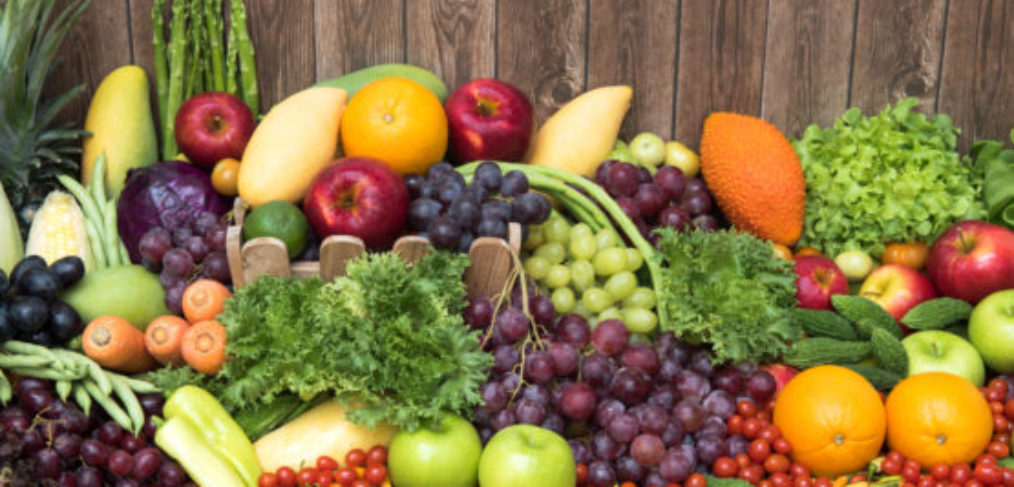What if We Just Called Food ‘Food’?

If you had to categorize the type of food shown above, how would you do so?
You might call it fruit.
Fair enough… after all, it is fruit!
You also might say it looks like health food, or even a gift basket and all are equally valid ways to classify it.
But would you automatically think Vegan? Or Paleo? Or Zone? Or Blood Type?
This is where it gets tricky; too many titles, too many approaches to how we might eat, many of which are based on sound research and science, but equally as many which have become misunderstood trendy versions of the original.
A recent article in the Times, Good Vegan, Bad Vegan (1), prompted me to write this post as it addressed several points worth considering when we opt to force ourselves into eating a certain way, possibly without understanding the why behind any given type of protocol and thereby often missing the purpose.
I have shared many a time that I was vegan for two full years.
It was part of my own journey to try to break apart what I was eating that may have been contributing to years of GI distress.
While, at the time, I thought I was eating in a very healthful manner, little did I know that I was actually making my own issues worse, thanks to the gluten-rich faux meats and legume-heavy meals I ate as part of that regime.
It didn’t happen overnight, of course, but with my own gradual shift away from choosing to get my protein solely from plant sources and toward mindfully sourced proteins, I was able to create my own personal eating plan to support GI health as well as athletic performance.
The single differentiating factor between how I ate when I was vegan and how I ate when I began an authentic Paleo approach was indeed, the proteins I ate, as well as a few of the cooking fats I now use on a regular basis.
Both, when implemented properly are rich in local, in season produce, a variety of naturally occurring fats and actually have a lot more in common than many might imagine.
Understanding each different type of eating plan (I hesitate to call them diets, as I do truly believe it’s a mindset and long term way of eating, rather than a short term regime to follow to achieve a quick fix answer to reach a health goal) properly is the very most fundamental step in choosing which way we might want to eat.
It’s because of this lack of understanding that it becomes easy to make judgements about whether or not different approaches to eating are healthy or not, as well as where we are getting our information.
“… I object vehemently to proselytizers who distort science or the support for dietary advice offered to the more than 90 percent of us who choose to consume animal foods, including poultry and red meat, in reasonable amounts.”, stated Jane Brody in her article last week, and I couldn’t agree more.
The single most important piece of education for myself when I shifted from vegan to including first fish, then meat, was learning about where the proteins were coming from, how the animals had been raised and the vast difference between a 100% grass fed filet and a corn finished steak or farmed salmon compared to wild-caught.
In both examples, one could not be further away from the other, yet when we make gross categorizations such as ‘all meat is bad for the planet and causes cancer’, without distinguishing the source, we do ourselves a disservice as well as those around us to whom we share our point of view.
I also support the author’s statement that in that I also do not “endorse inhumane treatment of farm animals or wanton pollution of the environment with animal wastes and misused antibiotics and pesticides’; in fact, animal welfare has always been and will always be a hugely critical component in how I believe we should all choose our fish, chicken, game and steak.
I also do not support the idea that eating a diet rich in processed gluten-free food equals a healthy way to eat, nor does a vegan diet heavy in vegan ice cream, cereals, cookies and shakes lead the path to optimal health.
So what’s the answer?
You might be surprised to read this, but it’s not necessarily 100% paleo all the time for everyone.
For many years, I felt this way, not only because it was my own solution to years of illness, but also for many others with whom I’ve worked and millions more across the globe about whom I have merely read.
Think of it this way: we’re all different and the identical eating plan for all of us might not be the answer.
However, we might also argue that forcing ourselves to follow someone else’s interpretation of the healthiest way to eat might not be the best idea either.
Here’s a thought: what if we tossed aside the many ways we label what we eat, make the majority of what we eat be food which is actually food (i.e. what grew or ran in the area we live in), minimize foods we might call special occasion treats and then let our own bodies tell us if it’s working or not?
At the end of the day, only we know how we feel and it can be quite empowering to decipher one or a few foods which might be culprits for anything from stomach issues, to anxiety to inability to lose weight.
Think food first, move your body, tune in and see how you’re feeling and above and beyond, don’t feel compelled to push a square peg into a round hole of one more ‘diet’ which isn’t really serving you.
(1) https://www.nytimes.com/2017/10/02/well/eat/good-vegan-bad-vegan.html?_r=0





